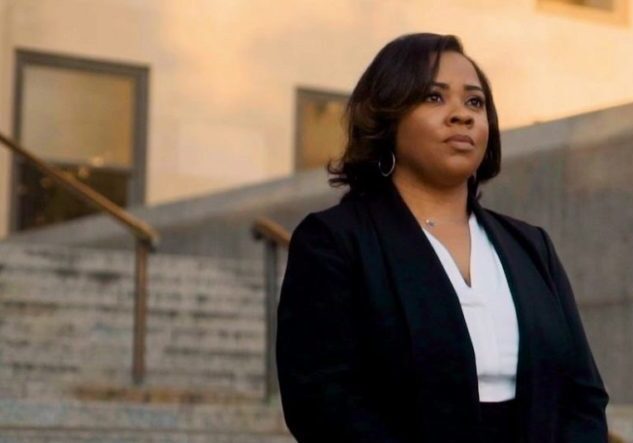
If you enjoy watching movies or television shows about lawyers, you’ve likely heard the phrase “burden of proof” many times. But courtroom dramas and procedural shows usually don’t explain what a “burden of proof” is or why it matters. This post will shed some light by explaining who has the burden of proof in Alabama personal injury cases.
The Burden of Proof in Alabama Personal Injury Cases
Before we begin, we must look at how courts operate. At trial, lawyers provide the judge and jury with facts. But an attorney cannot go into court with just rumors and allegations. Burdens of proof require lawyers to prove facts to a particular degree of certainty. Put another way, in court, a fact does not exist unless a lawyer can provide sufficient evidence that it exists. What makes the evidence sufficient depends on the area of law.
In criminal cases, prosecutors must prove guilt beyond a reasonable doubt. To meet this standard, the prosecutor must convince the jury “to a moral certainty” that the disputed fact exists. Legal experts say that to meet this burden, a jury must be 98 to 99 percent certain of a fact. This is the highest burden of proof in American courts.
Non-criminal cases – also known as civil cases – use the “preponderance of the evidence” standard. This standard asks for proof that a fact is “more likely than not” to exist. Unlike the nearly 100 percent certainty required by beyond a reasonable doubt, legal experts believe that the preponderance standard only demands 51 percent certainty.
Alabama, like nearly every state, uses the “more likely than not” standard in personal injury cases.
Here’s how these burdens work. In a car accident, the victim might say that the other driver was texting before the accident. In a criminal case, the prosecutor would have to convince the jury that it is 99 percent certain that the driver was texting. However, in a civil case, the attorney would only need to prove that it was more likely than not – or 51 percent certain – that the other driver was texting while behind the wheel.
Who Has The Burden of Proof in an Alabama Personal Injury Case?
Generally, the injured person bears the burden of proof in a personal injury case.
A civil case begins when the plaintiff – the injured party or victim of the accident – files a complaint in court. That complaint will briefly list the plaintiff’s injuries and why the plaintiff thinks that the defendant – the person who caused the injury – is responsible.
In Alabama, as in other states, the plaintiff has the burden to prove the facts.
So, going back to our earlier example of the texting driver, in order for our plaintiff to win, they would have to convince the jury that it is more likely than not: 1) that the defendant was careless; 2) that the plaintiff was injured; and 3) that the injuries were caused by the defendant’s carelessness.
This means that the defendant generally does not have to prove anything in a personal injury case.
However, the defendant may have the burden of proof on certain issues. If a defendant raises a defense during a personal injury case, the defendant will have the burden to prove the facts that support that defense. Contributory negligence (when a person’s own carelessness contributes to their injuries) is one such defense.
Going back to our example once more, let’s assume that the defendant in our example believes that the plaintiff helped to cause the accident by speeding. If the defendant wants to raise this as a defense, it would be the defendant’s burden to convince the jury: 1) that it was more likely than not that the plaintiff was speeding; and 2) that it is more likely than not that the speeding was a significant cause of the accident.
Why Does This Matter?
While this might seem like dry legal talk, these doctrines can affect you. If you go to court, you will need to prove that your version of the facts is the one that is “more likely than not” to be the truth. So, to win, you will need to collect evidence. The most important time to get this evidence is immediately after an accident.
If you wait too long after an accident, witnesses’ memories can fade, evidence can be lost, or injuries can be missed. If your attorney does not have these important pieces of evidence, it will be hard to meet the burden or win the case. This means that if you are in a car accident, you should immediately (or as soon as you are able):
- Get the names of all parties at the scene;
- Get a police report;
- Take pictures of the scene;
- Take photos of any physical injuries;
- Get pictures of any property damage;
- Visit a doctor, even if you feel fine. (Many injuries do not appear until days later.)
After taking these immediate actions, you should keep records of all communications you have with doctors, insurance company representatives, employers, and others who have information that might affect your case. If you aren’t sure what you need, keep it all and let your lawyer decide what is helpful.
More Questions About Who Has The Burden of Proof?
Hopefully, this post has helped you to better understand who has the burden of proof, why it matters, and what it means to you. If you or a loved one has been injured in a car crash or other type of accident, contact Collins Law, LLC today. Our team will work hard to protect your rights. Schedule a free consultation today by calling (205) 588-1411 or filling out this form.